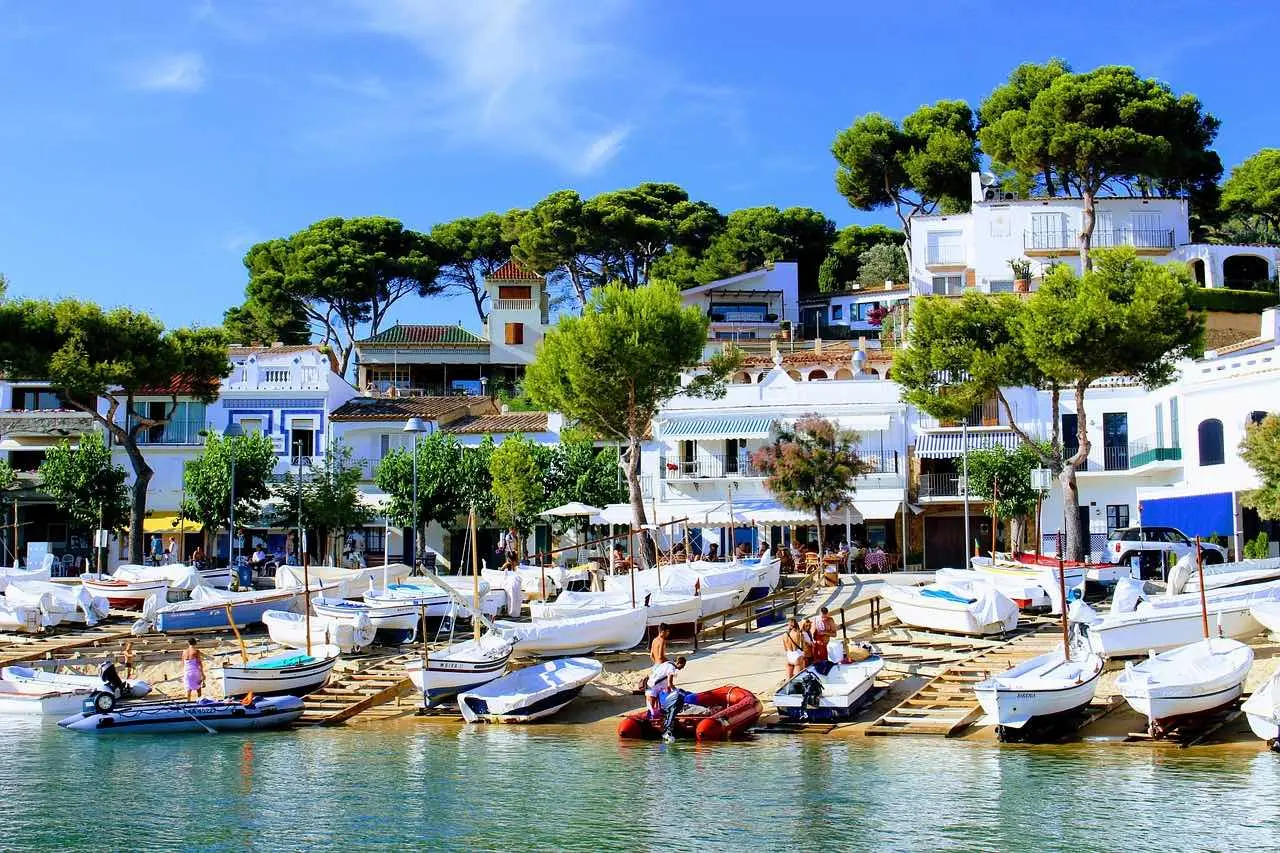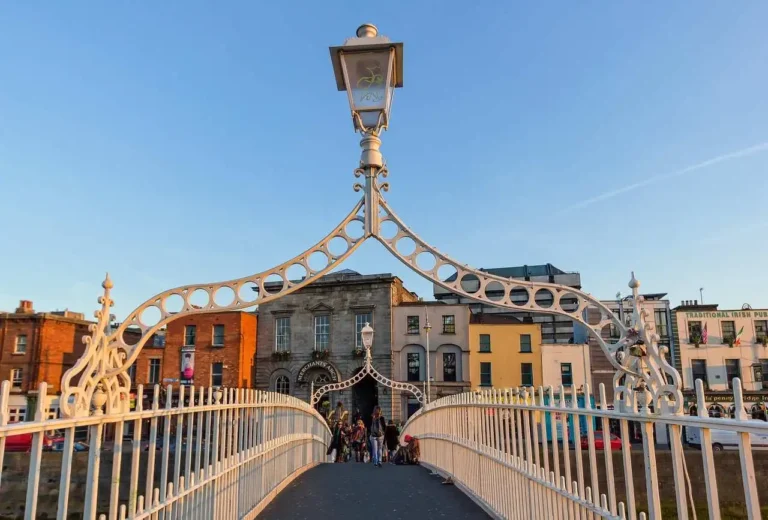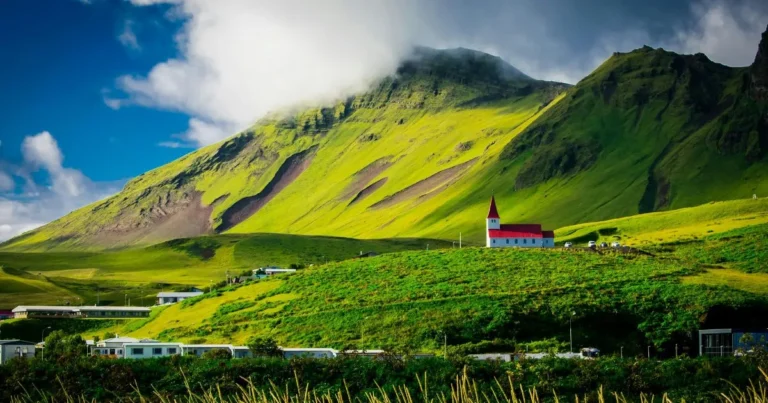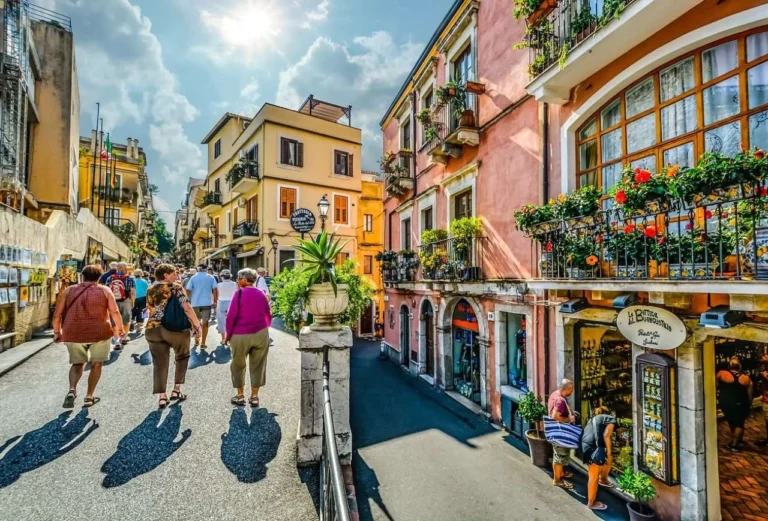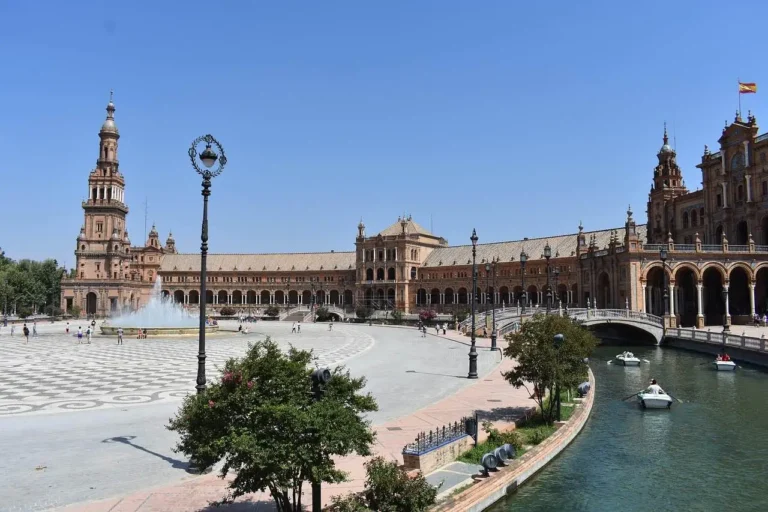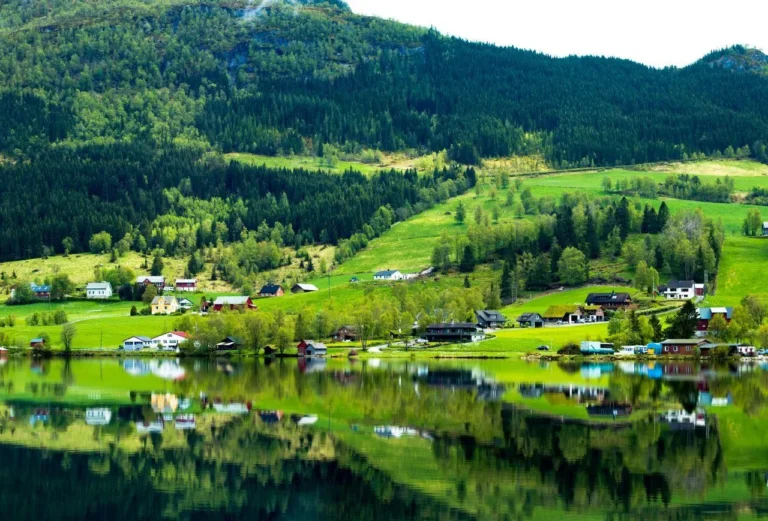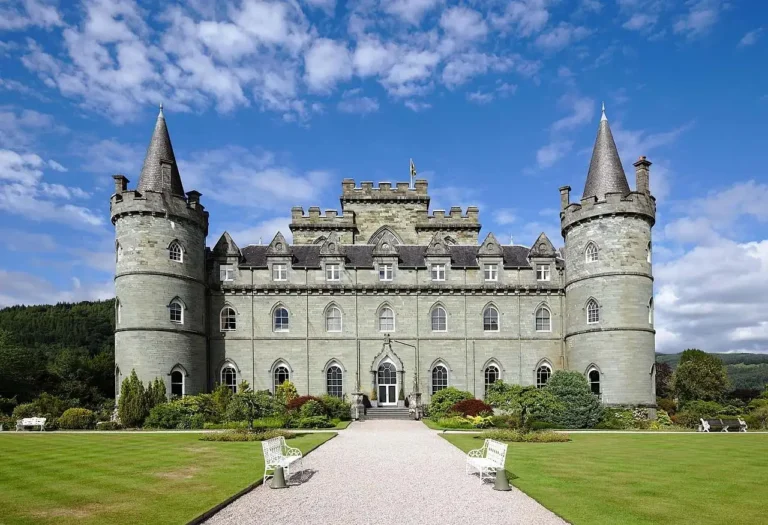Spain Itinerary 10 Days: How to See 8 Must-Visit Cities
Table of Contents
Table of Contents
Spain Itinerary 10 Days:
Start a journey through Spain with this guide. It covers 8 must-see cities. You’ll explore Madrid’s lively streets, Barcelona’s stunning architecture, and Andalucia’s rich history.
Planning your trip is now simple. This detailed 10-day itinerary shows you Spain’s highlights. You’ll find out what to see, where to stay, and how to make your trip unforgettable.
With this guide, you’re ready to make lasting memories in Spain. It’s a country full of wonder and excitement.
Planning Your Perfect 10-Day Spanish Adventure
Planning a 10-day trip to Spain can be exciting. To make the most of your journey, start by planning ahead. Think about the best time to visit, how to get to Spain, and how to move around once you’re there.
Best Time to Visit Spain
Spring (March to May) and autumn (September to November) are the best times to visit Spain. The weather is mild, and there are fewer tourists than in summer. These seasons are perfect for exploring cities like Madrid and Barcelona without the heat or crowds.
If you’re heading to the south coast of Spain, the weather stays warm into October. This makes autumn a great time to visit.
Explore How Many Days in Barcelona: The Perfect Trip Length
Getting to Spain from the United States
Traveling from the United States to Spain is easy. Many direct flights go to major airports like Madrid-Barajas (MAD) and Barcelona-El Prat (BCN). Airlines like Iberia, American Airlines, and Delta offer these flights. You can find one that fits your schedule and budget.
Transportation Options Within Spain
After arriving in Spain, you have several ways to travel between cities. High-speed trains (AVE) by Renfe connect major cities like Madrid, Barcelona, and Seville. They offer quick and comfortable travel. Check Renfe’s official schedule
You can also use buses or rent a car for more freedom, which is good for shorter trips or rural areas. For a 10-day trip, mixing trains and buses is the best way to see many places.
Your Complete Spain Itinerary 10 Days: Overview
Starting a 10-day trip in Spain, you’ll visit eight amazing cities. Each city shows Spain’s rich culture and history. This plan is packed with culture, history, and fun.
Itinerary at a Glance: 8 Cities in 10 Days
Your 10-day Spain trip will cover Madrid, Barcelona, Valencia, Alicante, Seville, Cordoba, Granada, and Malaga. Each city brings its own view of Spain’s heritage. In Madrid, see the royal palace and enjoy the nightlife. Barcelona will amaze you with Gaudí’s Sagrada Família and beautiful buildings.
In Andalucia, you’ll find Seville, Cordoba, and Granada. Each place has its own history and culture. This trip is perfect for seeing Spain’s variety, making it a great andalucia travel itinerary.
Packing Essentials for Your Spanish Journey
Packing for Spain means mixing practical and stylish items. You’ll need comfy shoes for walking. Pack light clothes for the warm days and layers for cooler nights. Remember sun protection, a camera, and an adapter for your devices.
- Comfortable walking shoes
- Lightweight clothing
- Sun protection (sunglasses, sunscreen, hat)
- Power adapter for charging electronic devices
- Camera to capture the beautiful landscapes and architecture
Budgeting for Your 10-Day Spain Trip
Planning your Spain trip involves thinking about where to stay, eat, travel, and what to do. Spain has many places to stay, from cheap hostels to fancy hotels. Try tapas and local food to save money.
To cut costs, get a Spain Rail Pass for trains. Also, look for free walking tours in each city. With some planning, your 10-day Spain trip can be both fun and affordable.
Days 1-2: Madrid – Spain’s Vibrant Capital
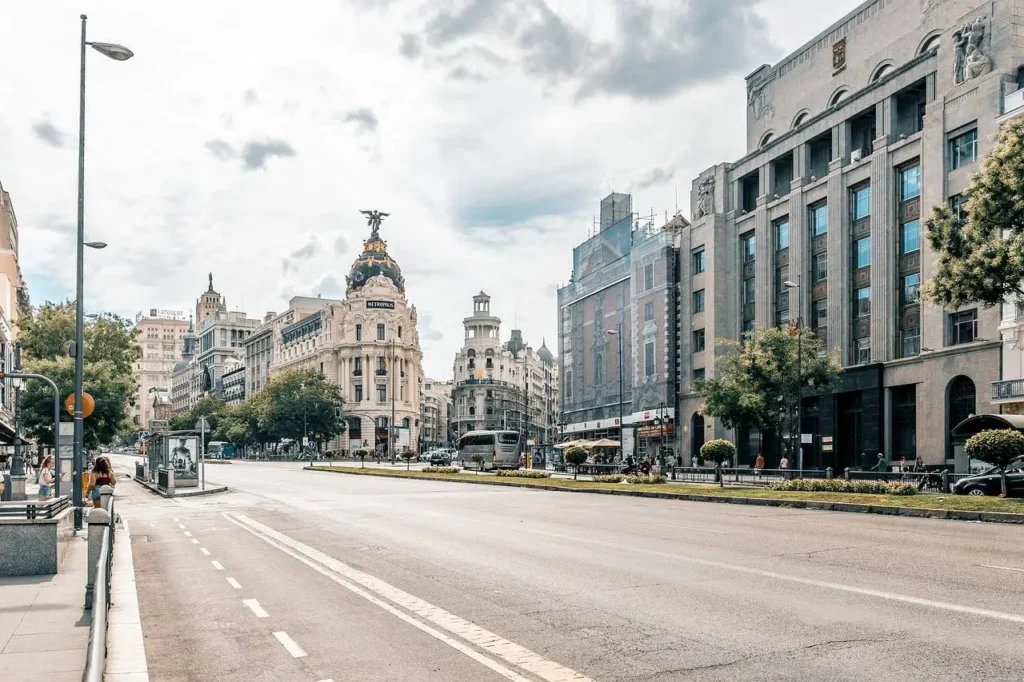
Madrid, the lively capital of Spain, kicks off your 10-day journey. It’s a blend of culture, history, and food. You’ll see why it’s loved by travelers. With its beautiful buildings, top museums, and tasty food, there’s something for everyone.
Must-See Attractions in Madrid
Madrid boasts many famous landmarks. Discover the top things to do in Madrid, includin The Prado Museum is a top art museum with European art. The Royal Palace of Madrid is the royal family’s home, though mostly for ceremonies.
Don’t miss the Retiro Park and the historic center. You can walk through lovely streets and see the Puerta del Sol and Plaza Mayor. Also, check out the Reina Sofia Museum for Picasso’s Guernica.
Where to Stay in Madrid
Finding the right place to stay makes your trip better. Madrid has many choices, from fancy hotels to affordable hostels. Stay in Malasaña or Salamanca for a great spot. Malasaña is cool with trendy shops and nightlife. Salamanca is classy with upscale shopping.
Madrid’s Culinary Highlights
Madrid’s food scene shows off its culture. Try the Spanish tapas, like patatas bravas and croquetas. Visit the San Miguel Market or a local taberna for a real taste.
Madrid is famous for its Spanish cuisine, like paella and gazpacho.
Days 3-4: Barcelona – Gaudi’s Masterpiece City
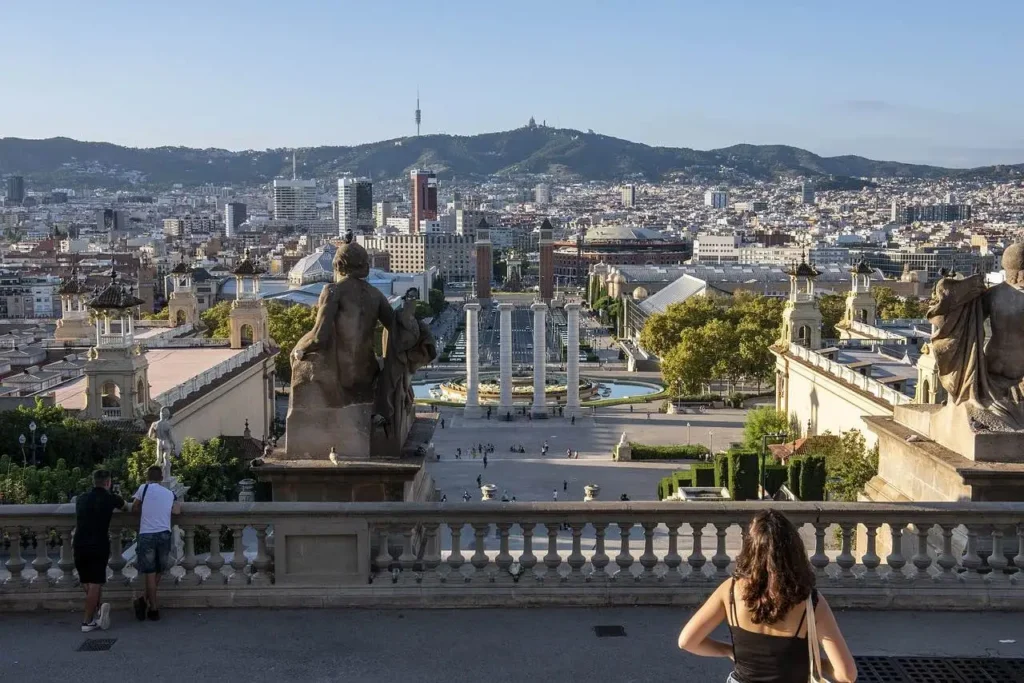
Leaving Madrid, you’ll find yourself in Barcelona, a city full of creativity and architectural wonders. Barcelona, the capital of Catalonia, is known for its unique culture and stunning buildings. These are thanks to the legendary Antoni Gaudí.
Barcelona’s Architectural Wonders
Barcelona boasts some of Gaudí’s most famous works. The Sagrada Família, a UNESCO World Heritage Site, is one of the world’s most famous landmarks. It’s a place where you can spend hours marveling at its beauty.
Other must-sees include Park Güell and Casa Batlló. Park Güell is famous for its mosaic benches and twisted stone columns. Casa Batlló is known for its colorful façade and quirky design.
Gaudí’s work has greatly influenced Barcelona’s architecture. His designs continue to inspire artists and architects today. As you explore the city, you’ll find more architectural gems that show Gaudí’s unique style.
Exploring Barcelona’s Neighborhoods
Barcelona is made up of diverse neighborhoods, each with its own charm. The Gothic Quarter is a must-see, with its narrow streets and historic buildings. La Rambla is great for shopping and people-watching.
El Born district offers a more relaxed vibe. It’s known for its boutique shops, art galleries, and trendy restaurants. Don’t miss La Boqueria Market, one of the world’s best food markets.
Wondering how many days to spend in Barcelona? Find out the perfect trip length before you dive into each neighborhood’s highlights.
Day Trip Options from Barcelona
Barcelona has a lot to offer, but there are also great day trips to take. Montserrat, a mountain range about an hour from Barcelona, is home to a stunning monastery. It offers breathtaking views.
Visit the charming coastal towns of Sitges and Castelldefels for beautiful beaches and vibrant culture. For history buffs, Tarragona’s ancient Roman ruins are a must-see. This UNESCO World Heritage Site is filled with archaeological treasures.
Days 5-6: Valencia and Alicante – Mediterranean Gems
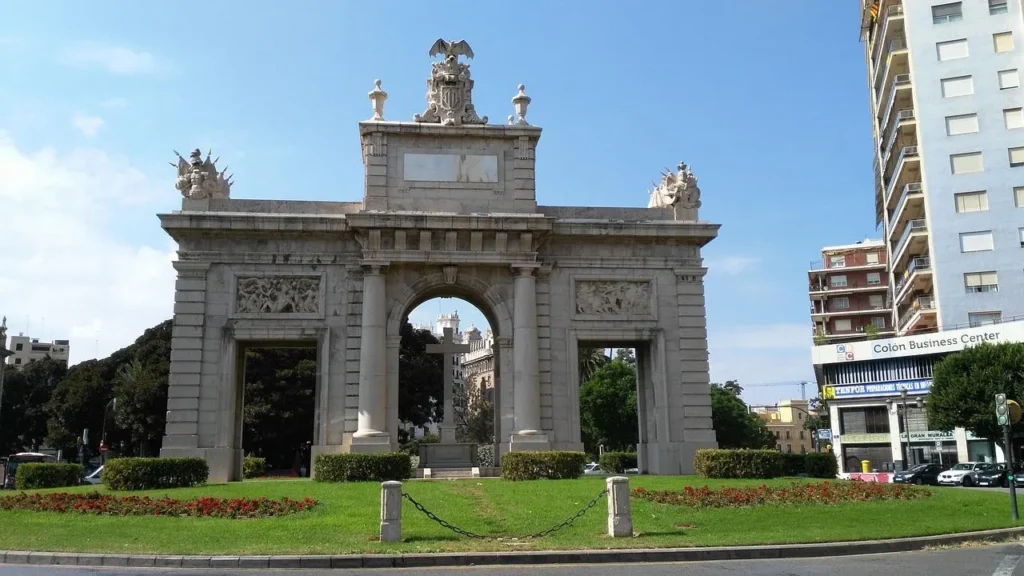
Next, you’ll explore the Mediterranean coast, visiting vibrant Valencia and Alicante. This part of your trip offers culture, relaxation, and tasty food.
Valencia: City of Arts and Sciences
Valencia is famous for its futuristic City of Arts and Sciences. It’s a top spot for families and culture lovers. You can see the L’Oceanogràfic, Europe’s biggest aquarium, or the Palau de les Arts Reina Sofia, a beautiful opera house.
The old town of Valencia is also a gem. It has lovely parks and historic buildings. Be sure to try paella, a dish from this area.
Alicante: Beaches and Castle Views
Alicante is your next stop, known for its beaches and castle. The Castillo de Santa Bárbara gives amazing views of the sea. You can also walk along the Explanada de España, a beautiful promenade.
The beaches, like Playa del Postiguet, are great for relaxing. Alicante also has a lively nightlife with many bars and restaurants.
Coastal Cuisine of Eastern Spain
The food in eastern Spain is delicious. You’ll enjoy paella and other dishes like arroz a la banda and fideuà. Fresh seafood is a big part of the local cuisine.
While tasting the local food, check out the markets and shops. They offer unique souvenirs and a glimpse into the local culture.
Days 7-8: Exploring Andalucia’s Treasures – Seville and Cordoba
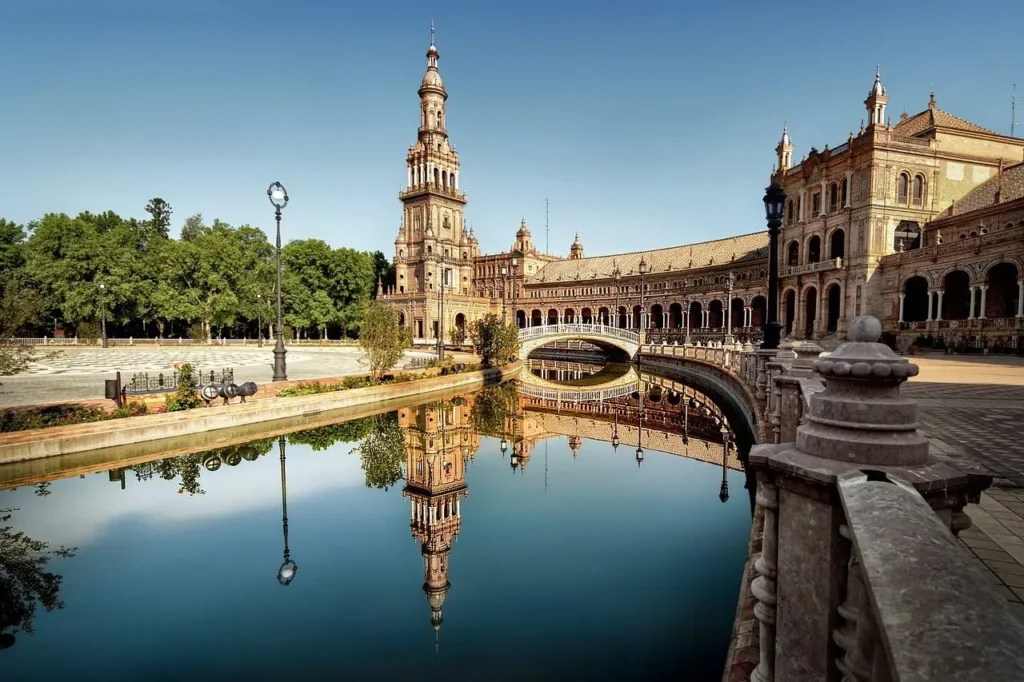
As you travel through Andalucia, you’ll discover the rich history and culture of Seville and Cordoba. These cities are filled with tradition and offer many experiences. They show the best of Andalucia.
Seville: The Heart of Andalucia
Seville, the capital of Andalucia, is known for its charming neighborhoods and historic landmarks. You can explore the Cathedral of Seville, one of the largest Gothic churches in the world. Climbing the Giralda Tower gives you breathtaking views of the city.
The Royal Alcázar Palace, with its Mudéjar architecture, is another must-see. The Santa Cruz neighborhood, with its narrow streets and picturesque plazas, is perfect for wandering. It’s a great place to soak up the local atmosphere. Don’t miss Seville’s vibrant nightlife.
Cordoba’s Historic Center and Mezquita
Cordoba’s historic center is a testament to the city’s rich history. The Mezquita (Mosque-Cathedral) is one of the most significant Islamic buildings in the world. Its architecture is a blend of Moorish and Gothic styles, showing the city’s complex past.
Wandering through the historic center, you’ll find the Jewish Quarter. It has narrow streets and charming shops. The nearby Roman Bridge and the Alcázar de los Reyes Cristianos are also worth visiting.
Andalucian Culture and Flamenco
Andalucia is known for its vibrant culture, and flamenco is a big part of it.
Andalucian culture is also seen in its cuisine. Try dishes like gazpacho, jamón ibérico, Make sure to try some of the regional specialties during your visit.
Days 9-10: Granada and Malaga – The Best Places to See in Southern Spain
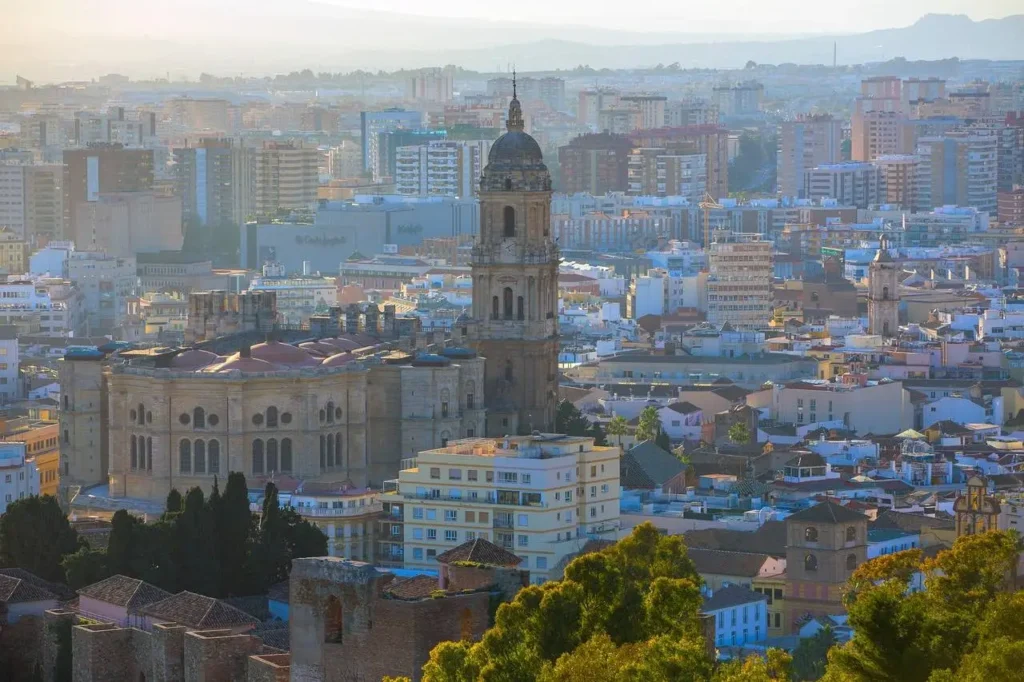
As you near the end of your Spanish trip, you’ll visit Granada and Malaga. These cities show southern Spain’s rich history, culture, and natural beauty. They promise to make your travel unforgettable.
Granada and the Magnificent Alhambra
Granada will amaze you with its stunning architecture, like the Alhambra. This Moorish palace is a top Spanish attraction. It has beautiful Islamic designs and views of the city.
Walking through the Alhambra’s gardens and halls feels like stepping into a world of beauty. Don’t miss the Generalife gardens, Palacio Nazarí, and Alcazaba fortress for a full experience.
Malaga: Picasso’s Birthplace and Beach Paradise
Malaga is next, with its lively culture and lovely beaches. It’s where Pablo Picasso was born. You can see his art at the Picasso Museum.
Malaga’s beaches, like La Malagueta, are perfect for relaxation. They have golden sands and clear waters.
Things to Do in Southern Spain’s Coast
The southern coast of Spain has many beautiful towns and natural spots. You can visit the Alpujarras villages, hike in the Sierra Nevada, or try local food. There’s something for everyone.
Your last days in Granada and Malaga will be memorable. From the Alhambra to Malaga’s beaches, these cities show southern Spain’s best. Your trip will end on a high note.
Practical Tips for American Travelers in Spain
Before you head to Spain, there are key tips for American travelers. Being ready will make your trip better. It lets you explore Spain with confidence and respect for the culture.
Language Basics: Essential Spanish Phrases
Many Spaniards speak English, but knowing Spanish phrases helps a lot. Saying “gracias” (thank you), “¿dónde está…?” (where is…?), and “¿cuánto cuesta?” (how much does it cost?) is very useful.
- Learn basic phrases like greetings and expressions of gratitude.
- Download a translation app to help with more complex conversations.
- Carry a phrasebook or a flashcard for quick reference.
Understanding Spanish Customs and Etiquette
Spain’s culture is rich, and knowing local customs makes your trip better. For instance, dinner is later, around 9 PM, and siestas are common in many places.
Key customs to be aware of:
- Dining etiquette: Mealtimes are sacred, and dinner is often served late.
- Greetings: Kissing on both cheeks is a common greeting among friends and acquaintances.
- Siesta time: Many businesses close for a few hours in the early afternoon.
Safety and Health Information
Spain is safe, but it’s smart to be careful. Watch your belongings, mainly in crowded places and tourist spots.
- Stay hydrated, specially in the hot summer.
- Be aware of pickpocketing in crowded areas.
- Consider purchasing travel insurance that covers medical expenses.
Being informed and prepared lets you enjoy Spain fully.
Stay informed with the U.S. State Department’s Spain Travel Guide.
Conclusion
With this detailed spain itinerary 10 days, you’re set to explore Spain’s rich culture and stunning landscapes. You’ll see the lively streets of Madrid and the amazing architecture of Barcelona. You’ll also visit the beautiful Mediterranean coast and historic Andalucia cities.
Traveling through Spain, you’ll find the special charm of each place. From Valencia’s City of Arts and Sciences to Granada’s Alhambra, this guide helps you explore like a local. You’ll dive into the local culture and taste the delicious food.
Whether you love history, food, or just want to relax, this spain itinerary 10 days has it all. So, pack your bags, bring your camera, and get ready for unforgettable memories in this amazing country.
Looking for a complete overview of this travel plan? Visit our Spain Itinerary 10 Days guide to map out your journey step-by-step.
FAQ
-
What is the best time to visit Spain’s south coast?
The best time to visit Spain’s south coast, known as the Costa del Sol, is spring (March to May) and autumn (September to November). The weather is mild and pleasant, with temperatures between 64°F and 75°F (18°C to 24°C).
-
How do I get to Andalucia, Spain?
You can fly into Malaga Airport, the main international airport for Andalucia. Or, you can fly into Seville or Granada. Then, rent a car, take a taxi, or use public transport to reach your destination.
-
What are the must-see attractions in southern Spain?
Top attractions include the Alhambra in Granada, the Mezquita in Cordoba, and the Cathedral of Seville. Don’t miss the historic centers of these cities. Also, visit the Royal Palace in Seville and enjoy the Costa del Sol beaches.
-
What are the must-see attractions in southern Spain?
Top attractions include the Alhambra in Granada, the Mezquita in Cordoba, and the Cathedral of Seville. Don’t miss the historic centers of these cities. Also, visit the Royal Palace in Seville and enjoy the Costa del Sol beaches.
-
What are some things to do in southern Spain?
Explore historic cities, visit museums, and enjoy local cuisine. Relax on beautiful beaches. You can also take a flamenco show, hike in the Sierra Nevada mountains, or go on a boat tour.
-
What is the typical cuisine of Andalucia, Spain?
Andalucia’s cuisine is Mediterranean, with dishes like gazpacho, paella, and fried fish. Try local tapas, such as patatas bravas and tortilla española.
-
How do I plan a 10-day Andalucia travel itinerary?
First, choose cities to visit, like Seville, Cordoba, and Granada. Then, research attractions and activities. Create a daily schedule. Consider a guided tour or a travel guide to plan your trip.

